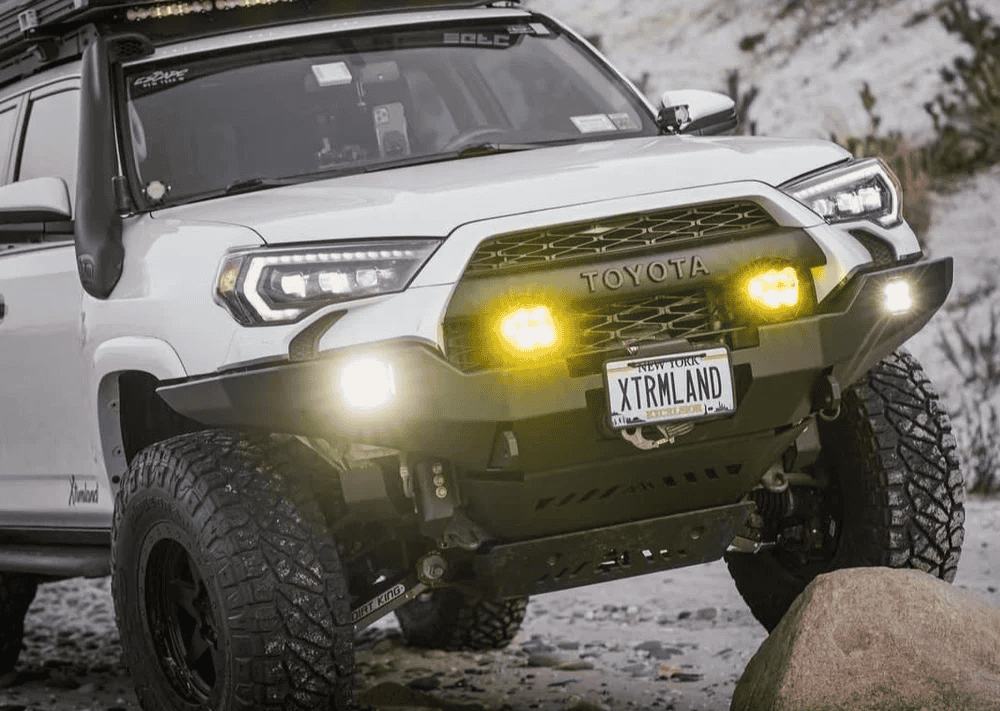Overland Vehicles

4x4 truck campers blend a four wheel drive pickup or cab chassis with a living space that stays stable on uneven ground. Common approaches include slide in campers that drop into a pickup bed, flatbed campers with full width storage and tanks, and expedition boxes mounted to a chassis cab. The goal is simple. Keep weight centered and low while packing sleeping quarters, a galley, power, and water into a compact footprint.
A semi trailer camper or camper tractor trailer applies the same idea at a larger scale. Here a road tractor pulls a converted box or reefer trailer outfitted as a rolling apartment. The advantages are substantial payload, long wheelbase stability, and cavernous storage. The tradeoff is maneuvering room, licensing requirements, and limited access on tight trails. For long highway links and extended stays, a semi conversion can feel like a small apartment on wheels.
Both platforms rely on careful weight management. Payload, axle ratings, and center of gravity determine how a vehicle handles off pavement. A half ton pickup can carry only so much. Three quarter and one ton trucks open the door to heavier campers, while medium duty and tractor platforms support full size living spaces with room for bikes, tools, and spare fuel. Matching the camper to the frame and suspension is the foundation of a safe, comfortable build.
The 4x4 system matters less than the total package. Low range gearing, locking differentials, and adequate ground clearance help when the track turns rocky or rutted. Pair that with load rated tires and wheels, upgraded shocks, and compliant springs tuned for constant camper weight. Stability on broken pavement often depends on shock valving and sway control rather than raw lift.
Powertrains with strong cooling, engine braking, and appropriate gear ratios ease long grades. Diesel and gas both work when cooling and filtration are designed for the duty cycle. Electrical loads for a modern camper can rival a small apartment. Factor in alternator output, high output DC to DC charging, and an inverter charger that can run air conditioning, induction cooking, and tools without drama.
A camper’s center of gravity should sit forward of the rear axle line. That keeps steering predictable and reduces porpoising on washboard. Heavy items like batteries, water, recovery gear, and spares ride low and near the frame rails. On a tractor trailer conversion, weight distribution across tandem axles and proper tongue weight on the fifth wheel plate preserves highway manners and braking performance.
Modern systems use lithium batteries, MPPT solar controllers, and high output alternators to replenish reserves while driving or idling. A realistic daily energy budget prevents surprises. Ventilation, insulation, and moisture control reduce the need for constant climate loads. Think mineral wool or closed cell foam, thermal breaks, and shaded windows to keep temperatures stable.
Conversions must respect manufacturer ratings. Exceeding GVWR or axle limits strains brakes and cooling and can affect insurance. A semi trailer camper may require specific registration, CDL considerations depending on weight and state rules, and annual inspections. Secure attachment points, sealed penetrations, and guarded edges protect occupants and wiring. Fire detection, ventilation, and egress windows are not optional.
Layout follows use case. Weekend trips with bike shuttles favor a gear garage and outdoor cooking. Long range travel leans toward indoor galley space, larger fresh water capacity, and quiet climate solutions. Common inside notes include a convertible dinette, a fixed bed to avoid daily setup, and a wet bath where plumbing can be consolidated along a single service wall for easier maintenance.
Materials matter. Lightweight composite panels and aluminum framing reduce creaks and add stiffness. Marine latches and compression seals keep dust out on gravel. For a semi trailer camper, insulated box panels, a vapor aware wall assembly, and multi zone lighting preserve comfort over big temperature swings. Acoustic treatment in the cab and the living space keeps road noise low and sleep deep.
A well planned system places service items where you can reach them. Valves and filters behind a single access panel. Electrical gear on a ventilated bulkhead with clean cable runs. Exterior storage sized for traction boards, recovery lines, a jack, and chocks. If you carry toys, a side door or ramp can turn loading into a one person task. A camper tractor trailer has the advantage of full height storage bays and a straight shot for long gear like kayaks and skis.
When you decide the platform and scope, having a specialist translate those priorities into a cohesive build makes all the difference. If you are exploring a compact expedition camper or scoping a larger living space, the Overland Rigs team can outline a path from chassis choice through final shakedown.
Bringing all those pieces together takes thoughtful engineering and tight craftsmanship. For a tailored scope that matches your travel style, see our Custom Overland Upfit approach, from structure and systems to lighting and recovery integration.
Make your rig a reliable travel partner, not a science experiment. Share your wish list and constraints, and we will help you choose a platform, refine the floor plan, and spec the systems that fit your routes. If you are comparing 4x4 truck campers with a semi trailer camper or a camper tractor trailer layout, our builders can explain the tradeoffs in plain terms. Learn more about our process and values at Why Choose OZK Customs.
Ready to turn your vision into a purpose built rig? Share a few details and our team will map a clear path from concept to delivery, with timelines, budget ranges, and a build scope that fits your travel style. Whether you need a nimble 4x4 camper or a semi trailer camper built for long range comfort, OZK Customs will design, fabricate, and upfit it end to end.
ADDRESS:
6159 E Huntsville Rd, Fayetteville, AR 72701
PHONE:
(479) 326-9200
EMAIL:
info@ozkvans.com